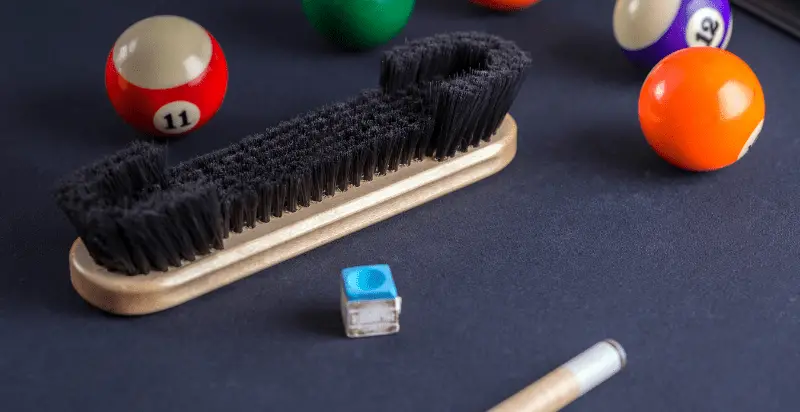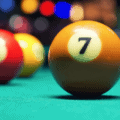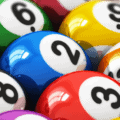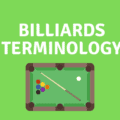Billiard balls are like a forensic scientist’s dream example of showing how ‘transfer’ works. You sweat, and the sweat gets on the cue. You wipe your forehead dry with a chalky hand, and then re-chalk the cue.
The combination of sweat and chalk impacts against the cue ball, and before long the chalk transfers onto every object ball in the frame.
Add to this the permutations of transferring dirt or grease from your hands from the cue ball to the felt, and picture every object ball rolling over trails microscopic trails of sweat, chalk, and human DNA.
Billiard balls do get very messy, and cue balls take the most abuse. If you still have a white ball after a game of Fargo, then you must be wearing gloves and using a micro-film transparent chalk, sent back from the future.
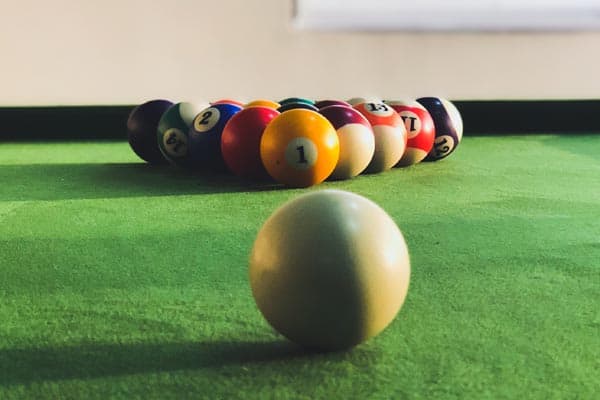
It is nice to play with a completely gleaming, shiny set of billiard balls, but a slight aesthetic disappointment isn’t the real cost of playing with balls that need a good clean.
Dirt can hamper the performance of the cue and object balls, adding friction, keeping them from rolling as far as expected. In worst-case scenarios (like chalk sticking to greasy smears), you end up with an imbalanced ball, which is not going to move in the right direction.
Messed-up ball surfaces are also going to play havoc with the quality of your table felt. A table deep clean or resurfacing is enough to make any wallet weep, so it’s best to keep on top of equipment maintenance to expand the lifetime of your table (and the balls) for as long as possible.
Thankfully, cleaning your billiard balls is an extremely straightforward process which can take around a half hour. Most of that time you can spend doing other things while the balls first soak in the water, and then dry off naturally. The part to pay attention to is the drying and cleaning at the end.
So, let’s have a quick canter through the process of cleaning your billiard balls, and then we’ll answer some of your commonly asked questions.
Method
- Clean out a tub or get your sink or bathtub as clean as you can possibly get it.
- Grab two towels, three J-cloths, and a couple of microfiber cloths
- Lay out the towels: one for the balls to be cleaned and the other for the ones which are drying
- Put a couple of J-cloths at the base of your tub/sink. They will probably float up disobediently and billow around the balls as you put them in on top, but that’s fine.
- See how many balls you can get into the tub without them touching each other. You may be able to clean your whole set in two batches.
- Fill your tub or bucket with enough warm water to cover them completely and add a capful or 1tbsp of gentle dishwashing detergent. Be aware that phenolic resin is very sensitive to excess heat. By “warm” water, we mean just a little under hand-hot (so, 100-110°F, tops).
- Simply leave each batch in the tub for five minutes, and then rinse them while giving them a gentle wipe with the third J-cloth before putting them on the towel to dry.
- Do not use a hairdryer to help the drying process along.
- Use the microfiber cloths to wipe off any remaining marks and give the balls a nice shine.
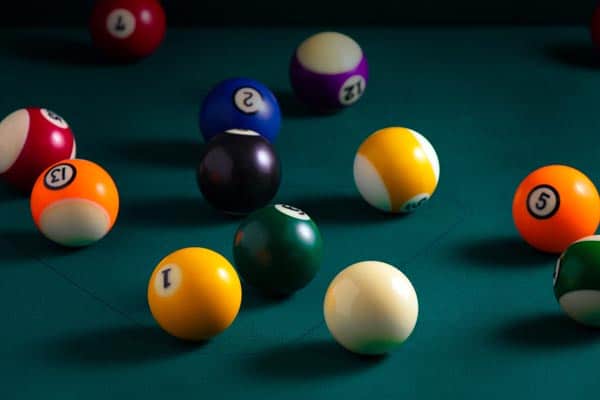
Because it’s such a basic process, it’s tempting to experiment with other products to see how much of a shine you can get on your ball, or to see if you can return the whites to their original new-out-of-the-box brightness.
Here are some tips to protect your billiard ball set from expensive and counterproductive experimentation.
How often should I clean my billiard ball set?
If you want to be really diligent, then it’s a good idea to clean the cue ball after you’ve concluded the last frame of each practice session.
Beyond that basic ritual maintenance, we would suggest giving your whole set a good clean once a week. It’s a good idea to give the pocket bumpers, cue, and the inside of your triangle a quick wipe with a microfiber cloth too.
What causes my billiard balls to discolor?
Balls in standard sets sold by major, reliable brands (Araminth, Brunswick or BlackFox) have a coating of phenolic resin. While this protects them—up to a point—from cracking and chipping, it is sensitive to UV light.
Balls perpetually racked on a table in a sunspot in an airy but warm room will discolor way faster than balls racked up in a room with muted light.
Heat plus oxygen plus UV light begins a process called photooxidation, which leads to degradation of the plastic coating, which will reflect the light at a different wavelength, hence the change of color.
This is a perfectly natural process and a slight yellowing on the whites of your billiard balls shows that you’re actually the owner of some good quality kit.
The tip from the pros is to embrace that change. Don’t fret about it.
So, I can’t refurbish my billiard balls at all?
If you’re gifting some second-hand billiard balls to someone and want to get them looking as new as possible, then you can use a polish or restorer which is formulated specifically to clean up billiard balls with a phenolic resin coating.
If you choose to use this polish, then there are two ways of getting the shine on your billiard balls. Firstly, you can apply a tiny amount of polish to a chamois leather or microfiber cloth and coat the entire ball.
Leave the ball on a towel to dry, and then return with a clean cloth with which to wipe the ball clean. Not only will this make your billiard balls gleam, but it will also give you a decent wrist and forearm workout.
If time is not on your side, or if you suffer carpal tunnel syndrome or arthritis, then you can use an electric ball polisher. The BallStar cleaner will take 8 balls at a time and buff them until they have that heartwarming gleam.
It will also set you back over half grand, but if you play very frequently and you’re determined to keep the felt on your table as nice as you can for as long as you can, this might be a good investment.
How about using wax?
We’re pretty sure there are World Pool-Billiard Association rules about not playing with balls coated in any kind of wax, but even if we put aside the annoyance of pernickety rules, it’s really questionable that this even helps your game when played in your own time.
There are three things to take into account if you’re thinking about applying a wax. Firstly, it’s is virtually impossible to apply the wax evenly across phenolic resin in the first place.
Not only is this a frustrating exercise which never seems to come to an end, but it also turns your balls into aerodynamic, unmanageable missiles which face fresh dangers of being scratched or chipped.
Secondly, the wax will come off unevenly as you play. Your ability to cut your shots accurately will be compromised, as will the speed of the balls on the felt. The whole speed and consistency of your game will be out of the window, which just clean takes the fun out of things.
Thirdly, waxes of any kind just aren’t good for your billiard or pool table.
Frequently Asked Questions
Can I put my billiard balls in the dishwasher on a short, gentle cycle?
No, no and thrice no. Well, you could, but don’t expect to get a good game out of them ever again. Heat is really bad news for phenolic resin, silk screens and overlays of any kind. It’s not just a case of stripping the luster from your billiard balls: you could actually disrupt the shape.
My striped balls are stained in a few places. Can I use CLR cleaner to ease those off?
This is definitely not advised and would generally be considered as counterproductive overkill.
Calcium Lime Rust (CLR) is great for removing stains from fiberglass, sinks and toilet bowls, glass, or some acrylic plastics, as you get with bathtubs. However, CLR should be kept away from any kind of natural stone or marble surface, sealed, metallic or painted glazes, laminates, Formica (and pretty much most domestic metals other than stainless steel or chrome.)
Even using heavily diluted CLR will react with the phenolic resin and create a loose, mottled effect which leave you feeling as if you’ve just killed your favorite toy.
Can I use a Glass Cleaner for a better shine?
It’s logical to think that treated cloths (like Windex wipes) will give you the streak-free gleam that you’re looking for, but we strongly recommend that you stay clear of any glass-cleaning solution for getting that final buff on your balls. These cleaners act as abrasives against resin. You won’t just be wrecking the aesthetics of your ball, but also your game.
The same advice goes for any kind of bleach you might have thought about. That includes toothpaste. Do not follow the inventive pied pipers of Quora and Reddit.
In conclusion, keeping your billiard balls in good condition is great for your game, for the rest of your equipment, and for generating pool envy among friends and rivals. Though it’s a bewilderingly simple process, it’s still something you need to make time for. See if you can figure out a cleaning pattern and ritual which works for you, and soon it’ll just become part of your week. You might even want to compile a polishing tracklist.
[no_toc]

I’m Lia and I love playing games. I started this site to share things with friends and they encouraged me to post more and now I’m trying to share things with the world – indoor and outdoor sports, and board and bar games. I write about things like Bocce, Croquet, Billiards, Darts and other fun ways to enjoy time with your friends and family!

